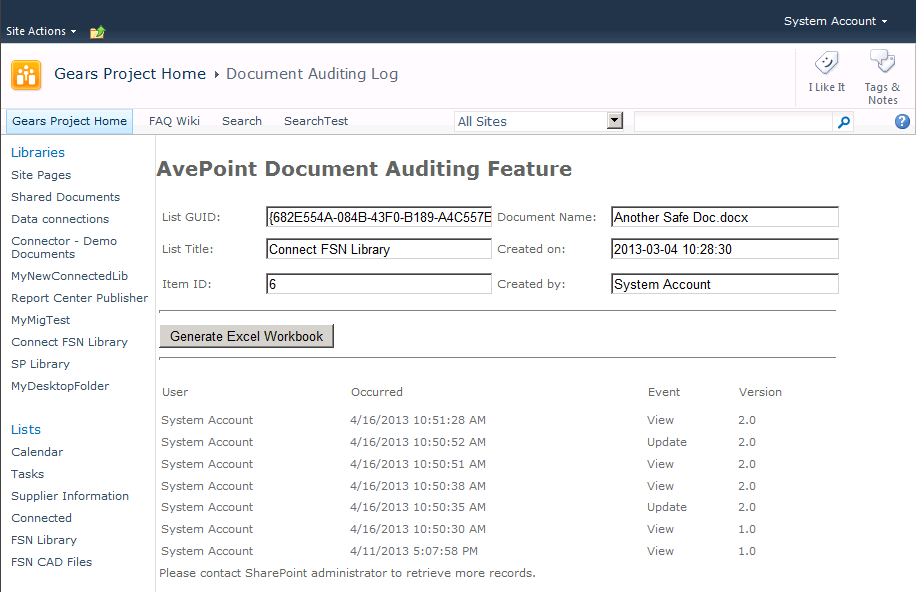| Data Field | What This Means |
| User | Who has been doing things in SharePoint? |
| Action (e.g. views, updates, check-outs, deletes, permission changes) | What have they been doing? |
| Object type (site collection, site, list, item, folder, or document) | What has been affected by their actions? |
| Location in SharePoint | Where is this activity happening? |
| Time | When did this activity happen? |
 5.) Audit pruning – Your organization is probably not required to keep all its audit data indefinitely. For example, in the case of the aforementioned energy corporation, records only need to be stored for three months – after which they can be expunged from the system to save database space. DocAve Auditor Reports for Your Business If there are strict compliance regulations for your company, you are most likely cognizant of them already and should have your own best practices in place for what kind of audit data to collect, how much, and how long to retain it. Such directives tend to stem directly from an industry authority or the government. The role of DocAve Report Center in all this is simply to gather the necessary data for you and present it in a helpful and intelligible manner. Whether you want to know who deleted a crucial project document or you need to monitor end-user activities as a regular part of your business process, Auditor Reports are a comprehensive, invaluable resource. To download a free trial of DocAve Report Center today, please visit our website.
5.) Audit pruning – Your organization is probably not required to keep all its audit data indefinitely. For example, in the case of the aforementioned energy corporation, records only need to be stored for three months – after which they can be expunged from the system to save database space. DocAve Auditor Reports for Your Business If there are strict compliance regulations for your company, you are most likely cognizant of them already and should have your own best practices in place for what kind of audit data to collect, how much, and how long to retain it. Such directives tend to stem directly from an industry authority or the government. The role of DocAve Report Center in all this is simply to gather the necessary data for you and present it in a helpful and intelligible manner. Whether you want to know who deleted a crucial project document or you need to monitor end-user activities as a regular part of your business process, Auditor Reports are a comprehensive, invaluable resource. To download a free trial of DocAve Report Center today, please visit our website.
